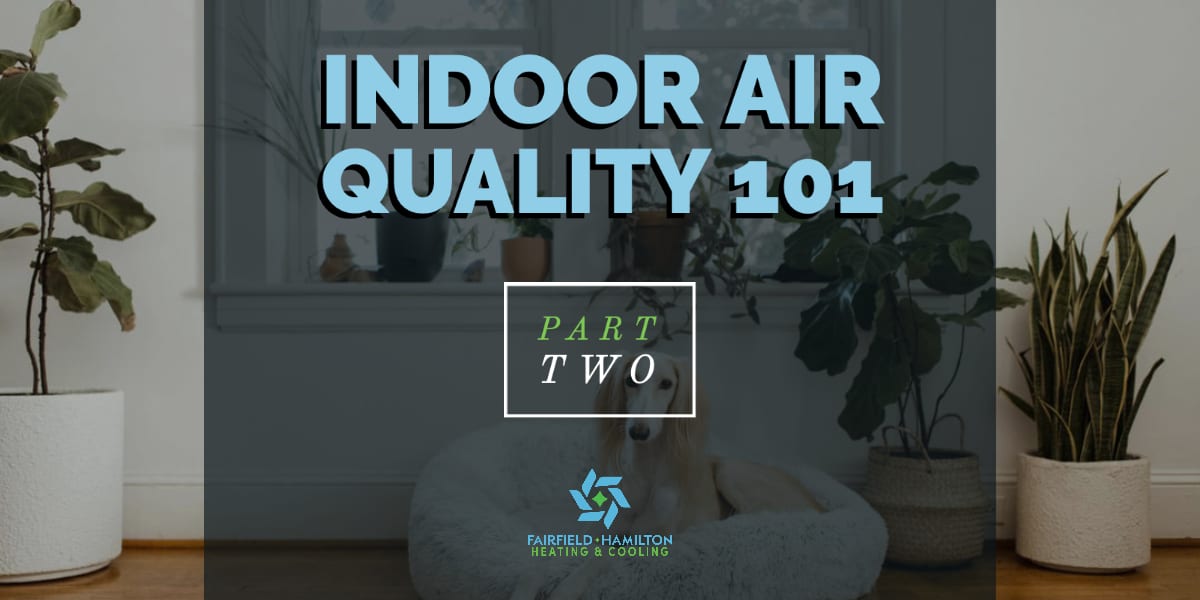In the first part of this series, we illustrated why Indoor Air Quality is so important, briefly. What compounds this importance is the surprising revelation that we Americans stay indoors for 90 percent of our time where, contrary to popular belief, our air quality is said to be two to five times more polluted than the air outside. Take in even the biggest most industrialized U.S. cities, and this is still true.
Now, in this blog, we go over the most common sources of air pollution in homes and workplaces in the U.S., and discuss how they have a lasting effect on our well-being, health, brain function, mood, and energy levels.
We should point out that indoor air pollution is not a new phenomenon; and it’s actually improved in recent decades. And yet despite this, most people still aren’t aware of how important the issue is; it’s most devastating in low income homes where the risk is at its highest, according to the World Health Organization.
Common Forms of Pollution Found Indoors
Indoor air pollution is an invisible enemy, health officials say, that cannot be seen by the naked eye as many of these particles are microscopic in size. As such, health officials have identified a wide range of toxins in our places of work and homes. These more prevalent types of indoor air pollution include:
- Carbon monoxide, radon and other dangerous gases
- Asbestos and other waste from degraded insulation
- Smoke from cigarettes, tobacco
- Mold and mildew
- Dust mite waste and other dust particles
- Organic particles from humans, pets and animals such as pet dander, fur and dead skin
- Grasses, grains and pollen
- Pesticides and other toxic chemicals
- Volatile Organic Compounds
- By-products of fuel-burning appliances
- Smoke from wood-burning stoves, fireplaces and candles
- Construction materials and furnishings from home renovations and repairs
- Products for household cleaning and maintenance
- Aerosol and other waste from personal care products and hobbies
- Outdoor air pollution coming into a home or building
- Food particles and fumes from cooking
How Does Indoor Air Pollution Affect Us?
Not only do these tiny particles of air pollution waft afloat in the air in your residence, but they are also known to travel on pets and people; they can be transported inside on shoes and find their way on carpets and rugs; often, they can get lodged into furniture. Once inside, they can become airborne again at any given time. If your home doesn’t have sufficient air filtration and/or ventilation, these airborne particles can cause health issues. Sometimes, they are already causing certain health issues and homeowners aren’t aware that they are the cause.
While some symptoms surface instantly, many of the health problems caused by indoor air pollution don’t manifest until later. In some cases, health officials show where it takes years for the effects to become apparent, which could be too late in some of these cases.
How indoor air pollution affects your health depends on several variables. These variables include your current health status (are you healthy and in good shape) and the type of pollution to which you might be exposed. Regardless, having sufficient ventilation and proper air filtration can have priceless advantages; in some cases, it can save lives.
Health Effects in the Short-Term
After a person is exposed to certain kinds of indoor air pollution, they might experience symptoms right away. Short-term effects include sore throat or throat irritation, and irritation or soreness of the eyes and nose are indicators of air pollution exposure. This is also true for feelings of fatigue, headaches, and dizziness. If you are experiencing any of these symptoms, it doesn’t necessarily mean you have indoor air pollution. However, it is a possibility you might want to check into. Furthermore, if allergy symptoms and/or asthma problems develop or get worse, this is another sign.
Health Effects in the Long-Term
Often, the longer term health effects take years to appear after exposure, or more often than not, years of repeated or prolonged exposure. If the air pollution particles in a house or workplace are really bad and aren’t addressed, these effects could result in certain respiratory disease, or heart disease. Health officials site where even cancer can result, as in the case of smoking in a home, among others.
Don’t Take Chances With Your Health or Well-being
Each and every member of our team here at Fairfield-Hamilton Heating & Cooling cares about your comfort year-round. But more so, we care about your health and we understand that some of this information, which is from the EPA , might seem unsettling. We aren’t presenting it to try to push you into purchasing anything. We merely hope to raise awareness because we believe the more you know, the more informed you can be in making decisions about your home’s HVAC and air-filtration systems. A huge part in improving your Indoor Air Quality is merely identifying and eliminating sources of air pollution in your home. In order to do this accurately, you should have your home tested. To learn more about air quality testing or to schedule an appointment with one of our technicians, call us at 513-540-1716 or click here to schedule now.
Did you miss Part 1 about Indoor Air Quality? If so, click here to read it now. Next, Part 3 will go into depth about the variety of services and products available to assist you in improving your Indoor Air Quality. Finally, Part 4 will explain measures you can take on your own to improve air quality in your home.











